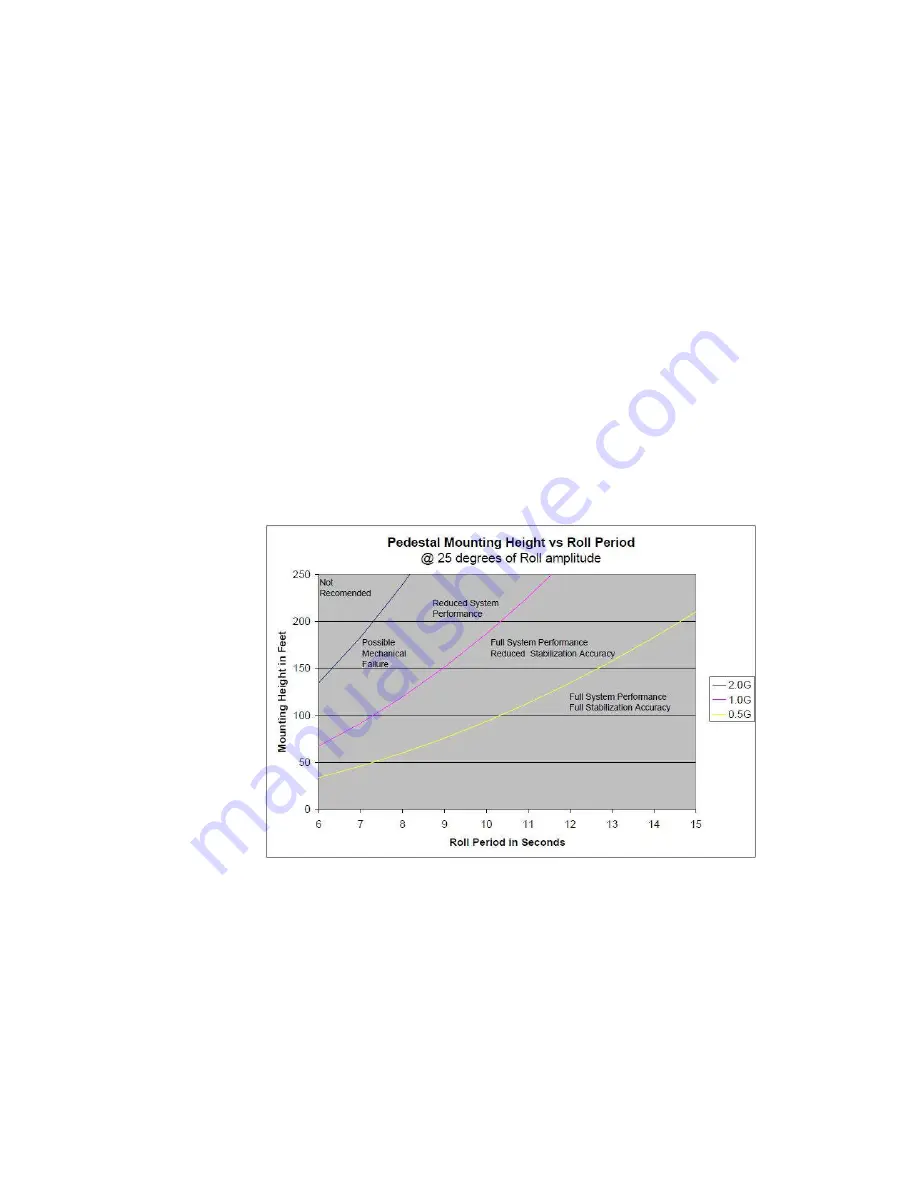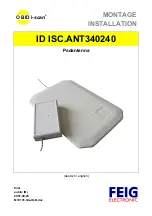
Site Survey
6012-12W Installation Manual
5.
Shear and bending should be taken into account in sizing the ADE mounting plate and
associated gussets.
6.
Shear and bending must be taken into account when sizing the pedestal to ship connection.
7.
All welding should be full penetration welds –V-groove welds with additional fillet welds
– with throats equivalent to the thickness of the thinnest base material.
8.
For an ADE mounted greater than 0.6 meters (24 inches) above the ship’s structure, at least
one (1) foot rung should be added. Additional rungs should be added for every 0.3 meter (12
inches) of pedestal height above the ship’s structure.
9.
For an ADE mounted greater than 3 meters (9 feet) above the ship’s structure, a fully
enclosing cage should be included in way of the access ladder, starting 2.3 meters (7 feet)
above the ship’s structure.
2.4.
Mounting Height
The higher up you mount the antenna above the pivot point of the ship the higher the tangential
acceleration (g-force) exerted on the antenna will be (see chart below).
When the g-force exerted on the antenna is low, antenna stabilization and overall performance are
not affected.
If the g-force exerted on the antenna is high enough (> 1 G), antenna stabilization and overall performance are
affected.
If the g-force exerted on the antenna is excessive (1-2 Gs), the antenna does not maintain stabilization
and may be physically damaged by the g-force.
2.5.
Mast Configurations
Sea Tel recommends mounting the ADE in a location that has both a clear line-of-sight to the target
satellites in all potential azimuth/elevation ranges and sufficient support against vibration excitement. If
possible, mounting the ADE pedestal directly to ship deckhouse structures or other box stiffened structures
is preferred. However, in many cases, this imposes limits on the antenna system’s clear line-of-sight.
Often the solution for providing the full azimuth/elevation range the antenna needs is to mount the ADE on
the ship’s mast. Unfortunately, masts do not consider equipment masses in design and often have harmonic
frequencies of their own.
There are many designs of masts used on ships – masts are nearly as unique in design as the ship is – but the
designs often fall into a few categories. These categories can be addressed in terms of typical responses and
problems with regards to vibration and mounting of ADE. The most common categories of masts are:
2-3
EAR Controlled - ECCN EAR99
Summary of Contents for 6012-12w
Page 101: ......
Page 102: ......
Page 103: ......
Page 106: ...8 7 6 5 4 D 5 C B A 8 7 6 5 4 ...
Page 116: ...8 7 6 5 4 3 50 58 58 59 2X 1 52 58 58 59 2X ...
Page 120: ......
Page 128: ......
Page 129: ......
Page 130: ......
















































